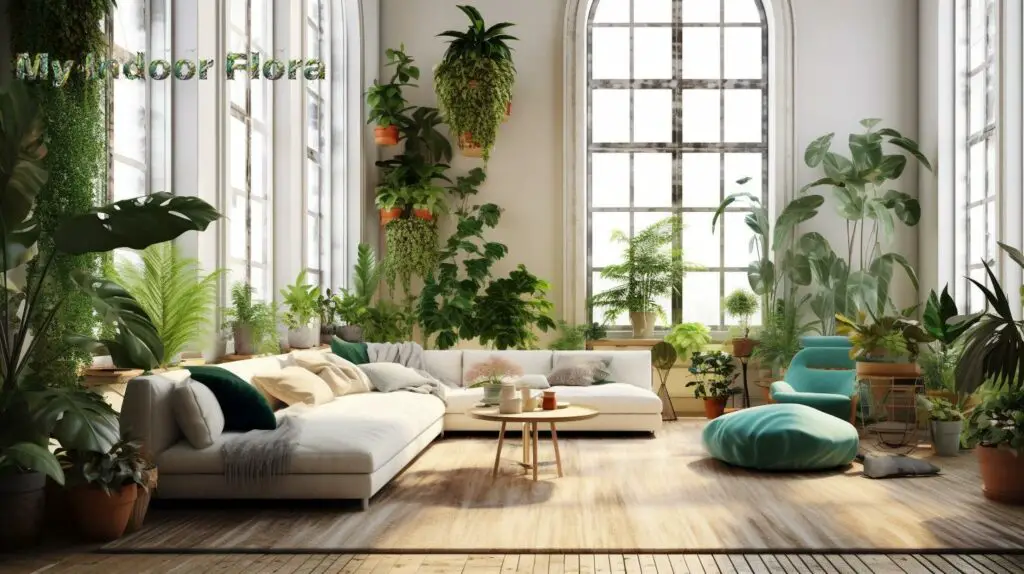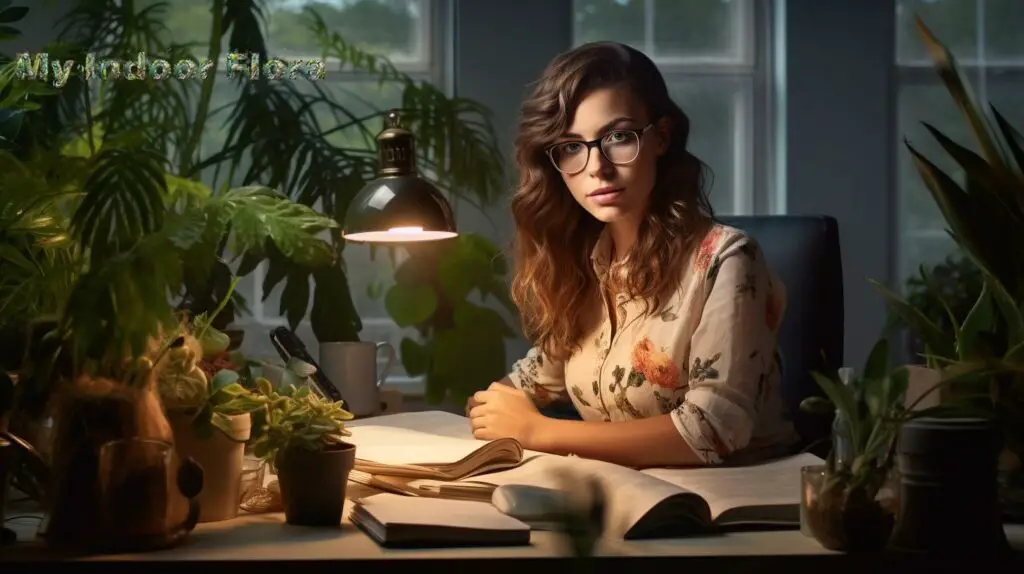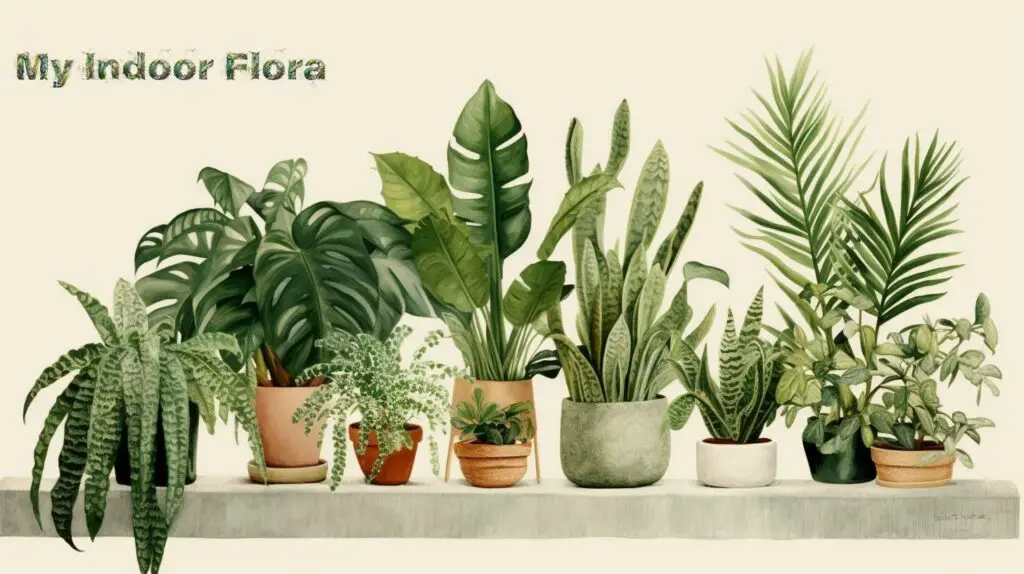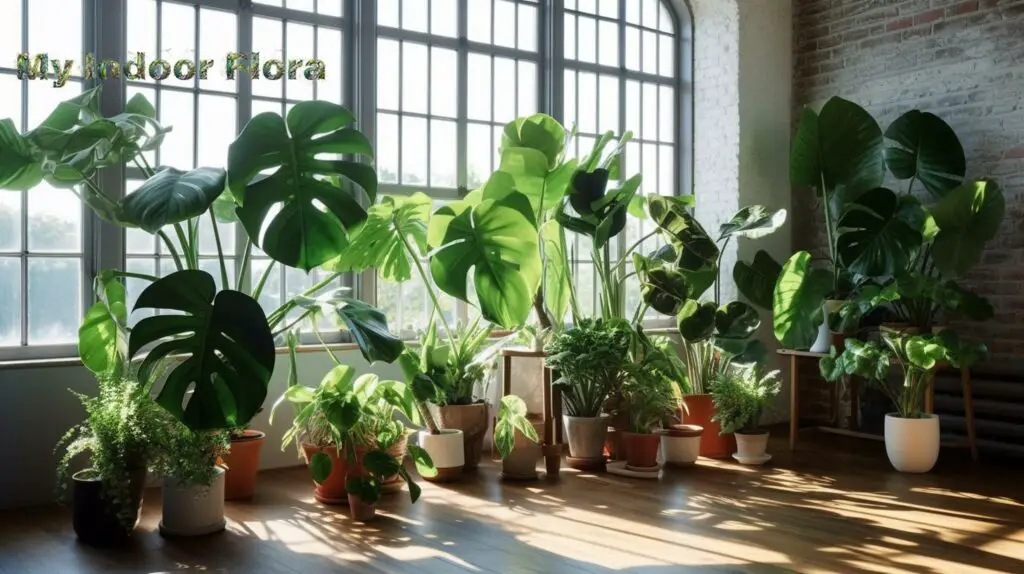Indoor plant styling, an amalgamation of greenery and aesthetics, is much more than just adding a dash of color to your living spaces. It’s a testament to the symbiosis between nature and human creativity that has gained substantial traction in recent years. This trend of urban interior gardening not only enhances the beauty of your homes and offices but also brings along a plethora of health benefits.
According to a study conducted by the University of Exeter, indoor plants can increase well-being, productivity, and creativity by up to 47%. This indicates the significance of indoor plant styling, not just from a visual perspective but also from a holistic well-being viewpoint.
In this guide, we will delve into the fascinating world of indoor plant styling, starting with understanding its importance for beginners. We will explore the myriad benefits of indoor plants in our living spaces, and then set the context for the guide, paving the way for you to embark on your own journey of creating a beautiful, healthy, and vibrant indoor environment.
Whether you’re a novice or a seasoned gardener, this guide will equip you with the essential knowledge and tips to transform your indoor spaces into lush, green sanctuaries. So, let’s get started and immerse ourselves in the world of indoor plant styling.

How Can You Start Styling Your Indoor Plants?
Before delving into specific techniques and tips, it’s essential to understand the basics of indoor plant styling and identify your own preferences. This will set the foundation for a cohesive and personalized design that will enhance your living space.
1. Understanding the Basics of Indoor Plant Styling
Indoor plant styling is all about arranging and displaying your plants in a visually pleasing manner, taking into consideration factors such as size, color, and texture. The key is to create a balance between the plants and the rest of your decor while maximizing the available space.
2. Identifying Your Personal Style and Preferences
Everyone has their unique aesthetic preferences when it comes to styling indoor plants. Some may prefer a minimalistic approach, with a few strategically placed statement plants, while others may opt for a lush, jungle-like atmosphere. Identifying your personal style will help you make decisions on the type of plants, planters, and arrangements that best suit your taste.
3. Gathering Inspiration from Various Sources
Look for inspiration in interior design magazines, social media platforms like Pinterest and Instagram, or even your friends’ and family’s homes. This will help you better understand the different styles and techniques, as well as gather ideas that resonate with you.
What Are the Popular Indoor Plant Styling Techniques?
Once you have a grasp on the basics and your preferences, it’s time to explore the popular indoor plant styling techniques. These methods can be combined and adapted to create a unique and personalized display that brings life to your living space.
1. Grouping Plants by Type and Size
One effective way to create visual harmony is by grouping plants with similar characteristics, such as size or leaf shape. This can create a sense of unity and order within your arrangement, making it more aesthetically pleasing.
For example, you could group small succulents together on a windowsill or cluster larger, leafy plants in a corner of your living room.

2. Creating a Focal Point with Statement Plants
Statement plants, such as fiddle-leaf figs, monstera deliciosa, or large palms, can act as a focal point in your indoor plant styling. Position these eye-catching plants in a prominent spot, such as near a window or by the entrance, to draw attention and create visual interest.
3. Mixing Textures and Colors for Visual Interest
Introducing a variety of textures and colors can add depth and dimension to your indoor plant arrangement. Combine plants with different leaf shapes, sizes, and colors to create a dynamic and visually appealing display.
For example, pair a tall snake plant with its upright, sword-like leaves with a trailing pothos that cascades over the edge of a shelf.
How to Choose the Right Indoor Plants for Your Styling Needs?
Selecting the appropriate plants for your space and styling needs is crucial to achieving a successful indoor plant arrangement. Consider factors such as light, temperature, and maintenance requirements when making your choices.
Considering Light and Temperature Requirements
Different plants have varying light and temperature needs. Assess the lighting conditions and temperature range in your living space, and choose plants that can thrive in those conditions.
For example, if your living room receives ample bright, indirect light, opt for plants like philodendrons, spider plants, or rubber plants. On the other hand, if you have a dimly lit space, choose low-light tolerant plants such as ZZ plants, snake plants, or pothos.

Matching Plant Sizes to Room Dimensions
Consider the size of your room and the available space for your plants. Larger rooms can accommodate bigger, more dramatic plants, while smaller spaces may require petite plants or creative solutions like hanging planters.
For instance, if you have a spacious living room, you can incorporate a tall, statement plant like a fiddle-leaf fig. In a small apartment, opt for compact plants like succulents, small ferns, or air plants.
Selecting Plants Based on Maintenance Needs
When choosing plants for your indoor arrangement, consider how much time and effort you can commit to their care. Some plants require more attention than others, so select plants that align with your lifestyle and commitment level.
For low-maintenance options, consider snake plants, ZZ plants, or succulents, which require minimal watering and care. If you’re willing to invest more time and effort, you may opt for more delicate plants like calatheas, orchids, or ferns.
How to Use Planters and Pots to Enhance Your Indoor Plant Style?
The planters and pots you choose can significantly impact your indoor plant styling. They can add color, texture, and personality to your arrangement, complementing both the plants and your overall decor.
Choosing the Right Planter Size and Material
Select a planter that accommodates the plant’s root system and allows for adequate drainage. The material of the planter should also suit the plant’s needs – for example, porous materials like terracotta are suitable for plants that prefer drier conditions, while plastic or ceramic pots are better for moisture-loving plants.

Coordinating Planter Colors and Patterns with Room Decor
Choose planter colors and patterns that complement your existing decor and create a cohesive look. You may opt for neutral tones, vibrant colors, or even mix-and-match patterns to create visual interest.
Using Multiple Planter Heights for Visual Hierarchy
Varying the heights of your planters can create a sense of depth and visual hierarchy within your arrangement. Consider using plant stands, tiered shelves, or stacked objects like books to elevate some of your plants.
How to Incorporate Indoor Plants into Different Living Spaces?
Each room in your home offers unique opportunities for indoor plant styling. Here are some tips on how to integrate plants into various living spaces.
Styling Plants in the Living Room
The living room is often the largest and most frequented space in a home, making it an ideal location for showcasing your indoor plants. Consider arranging plants on shelves, coffee tables, or even as a centerpiece on your dining table. Large statement plants can be placed in corners or next to sofas to create a cozy, inviting atmosphere.
Adding Greenery to Bedrooms and Home Offices
In bedrooms and home offices, plants can help purify the air and promote a sense of relaxation and focus. Place plants on windowsills, nightstands, or desks to create a serene and inspiring environment. Low-light tolerant plants like snake plants, ZZ plants, or pothos are suitable choices for these spaces, as they often have less natural light.

Enhancing Kitchens and Bathrooms with Plants
Kitchens and bathrooms are often overlooked when it comes to indoor plant styling but can benefit from the addition of greenery. Opt for humidity-loving plants like ferns or air plants for bathrooms, and consider adding herbs like basil, mint, or rosemary to your kitchen for a practical and visually appealing touch.
Best Practices for Arranging Indoor Plants on Shelves and Windowsills
Arranging plants on shelves and windowsills can be an effective way to maximize space and create stunning displays. Here are some tips on how to achieve a visually pleasing and functional arrangement:
Balancing Plant Heights and Sizes
Create a balanced and harmonious look by considering the heights and sizes of your plants. Place taller plants at the back or sides, and smaller plants towards the front or center, ensuring that each plant is visible and has room to grow.
Ensuring Adequate Light and Airflow for Each Plant
When arranging plants on shelves and windowsills, make sure each plant receives sufficient light and airflow. Avoid overcrowding and rotate plants periodically to ensure even growth and light exposure.
Layering Plants for Depth and Visual Interest
Layer your plants by placing them at different heights and depths on the shelves or windowsills. This can create a sense of depth and make your arrangement appear more dynamic and visually appealing.

How Can You Use Hanging Plants and Wall-Mounted Planters to Maximize Space?
In smaller living spaces or rooms with limited surface area, hanging plants and wall-mounted planters can be a creative solution to maximize space and add greenery.
Selecting Suitable Plants for Hanging and Wall-Mounted Planters
Choose plants that naturally grow in a trailing or cascading manner, such as pothos, string of pearls, or English ivy. These plants will gracefully drape over the edges of hanging baskets or wall-mounted planters, creating a visually striking display.
Installing Secure Hooks and Brackets for Hanging Plants
Ensure the safety and stability of your hanging plants by installing secure hooks or brackets. Follow the manufacturer’s guidelines for weight limits and proper installation techniques.
Arranging Wall-Mounted Planters for an Eye-Catching Display
Experiment with different arrangements and layouts for your wall-mounted planters. Consider grouping planters in clusters, arranging them in a grid pattern, or even creating a staggered, asymmetrical display for added visual interest.
How to Incorporate Plants into Your Home Decor with DIY Projects?
Adding a personal touch to your indoor plant styling can be achieved through DIY projects. These creative endeavors can result in unique and customized plant displays that reflect your personality and style.
Creating a Living Wall or Vertical Garden
A living wall or vertical garden is an innovative way to incorporate plants into your living space, especially if you have limited floor space. Construct a simple frame with mesh or fabric pockets, or repurpose a pallet or hanging shoe organizer, and fill it with small, low-maintenance plants like ferns, succulents, or air plants.
Building a Custom Plant Stand or Shelf
Design and build a custom plant stand or shelf that fits your space and style preferences. This can be a simple wooden ladder-style shelf, a modern metal plant stand, or even a floating shelf with built-in planters.
Crafting Unique Planters from Repurposed Materials
Create one-of-a-kind planters by repurposing everyday objects like tin cans, teapots, or even old boots. This not only adds character and charm to your indoor plant styling but also promotes sustainability and resourcefulness.
How Can You Maintain Your Indoor Plant Style Over Time?
Indoor plant styling is an ongoing process that requires regular maintenance and care. Here are some tips on how to keep your plants looking their best and ensuring your arrangements remain visually appealing.
Regularly Pruning and Grooming Plants
Prune and groom your plants by removing dead or yellowing leaves and trimming excessive growth. This not only keeps your plants healthy but also maintains the aesthetic balance of your arrangement.
Rotating Plants to Ensure Even Growth and Light Exposure
Rotate your plants periodically to ensure they receive even light exposure and grow uniformly. This can help prevent plants from becoming lopsided or overcrowded, maintaining the visual harmony of your arrangement.
Updating Planters and Accessories as Needed
Refresh your indoor plant styling by periodically updating planters, stands, or accessories. This can help keep your arrangements looking fresh and current, while also allowing you to adapt to changing tastes and decor trends.
Monitoring Plant Health and Replacing Plants When Necessary
Keep an eye on the health of your plants, and replace any that are struggling or have outgrown their space. This ensures that your indoor plant arrangement remains vibrant and visually appealing over time.
Conclusion
Indoor plant styling is an art that can be mastered with patience, creativity, and a keen eye for aesthetics. By following these tips and techniques, you can create stunning and personalized plant displays that enhance your living space and reflect your unique style. Whether you’re a beginner or a seasoned indoor gardener, there’s always room to experiment and grow in the world of indoor plant styling.
